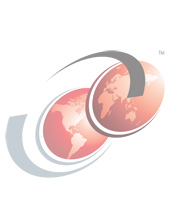About cookies on this site Our websites require some cookies to function properly (required). In addition, other cookies may be used with your consent to analyze site usage, improve the user experience and for advertising. For more information, please review your options. By visiting our website, you agree to our processing of information as described in IBM’sprivacy statement. To provide a smooth navigation, your cookie preferences will be shared across the IBM web domains listed here.
Abstract
Business agility is essential to client success in the fast-paced, competitive, and highly regulated global business climate of today. To grow and thrive, clients must effectively adopt and apply modern techniques (including analytics) to gain and sustain a competitive edge. An inflexible technology that is not based on standards hinders the ability of a client to meet its business needs.
IBM® DB2® for z/OS® and IBM System z® are an ideal and logical target for migrations from prerelational databases. New and existing clients rely on DB2 for z/OS and System z for their unsurpassed total system reliability, availability, serviceability, and security. Demonstrated benefits include exceptional availability and scalability, a superior level of protection for business-critical data and applications, ease of integration and management across platforms, and reduced infrastructure complexity.
Contents
Business agility is essential to client success in the fast-paced, competitive, and highly regulated global business climate of today. To grow and thrive, clients must effectively adopt and apply modern techniques (including analytics) to gain and sustain a competitive edge. An inflexible technology that is not based on standards hinders the ability of a client to meet its business needs.
IBM® DB2® for z/OS® and IBM System z® are an ideal and logical target for migrations from prerelational databases. New and existing clients rely on DB2 for z/OS and System z for their unsurpassed total system reliability, availability, serviceability, and security. Demonstrated benefits include exceptional availability and scalability, a superior level of protection for business-critical data and applications, ease of integration and management across platforms, and reduced infrastructure complexity.
Today the DB2 family of products (see Figure 1) offers an integrated end-to-end solution. It covers all platforms and includes existing data, from which clients can draw large benefits.

Figure 1. DB2 solutions
Did you know?
In the past, the amount of manual rewrite work needed to migrate a prerelational database and application far exceeded the work that was done by automated tools. However, with experience, innovations, and time, this dynamic changed. The advent of highly automated conversion solutions and methods made prerelational conversions viable and repeatable. This change reduced the amount of time needed, the risks involved, and the costs of the migration process.
Clients use automated conversion solutions to successfully migrate to modern platforms, such as DB2 for z/OS and System z. Several significant migrations of prerelational database to DB2 for z/OS have been completed, and many more are in progress. This trend is expected to continue as maturing conversion technologies become more popular and are widely accepted because of successful migrations.
Business value
Relational databases are the superior data stores of choice for over 25 years. Relational technology is the method of choice for storing large amounts of data with flexibility and easy access to data with a common language, Structured Query Language (SQL). Data stored in tables is accessible and is manipulated by SQL. This data accessibility, when combined with a language suitable for users, results in reduced maintenance and greater productivity.
Today’s IT shops are complicated. You likely support multiple types of hardware and software solutions. Although mean time between failures (MTBF) continues to improve, numerous components present the opportunity for a single point of failure.
DB2 for z/OS and the System z platform offer the foundation of resiliency for your environment, keeping your IT assets available to your internal and external customers. DB2 for z/OS and the System z platform provide the architecture to maintain maximum availability, when problems occur, and to adjust to changing and unpredictable workloads.
DB2 is integrated into the System z operating system (z/OS) software and hardware. Through this integration, DB2 can fully use the performance features of the underlying hardware and software. As such, DB2 delivers a level of performance that is unmatched by other mainframe-based relational database management system (RDBMS) products. Because mainframe-based RDBMS products must support work that originates from transaction processing monitors and from distributed systems (such as a client/server), the RDBMS must provide well-defined, efficient interfaces to those systems to facilitate application performance. DB2 provides these interfaces that support both mainframe transaction processing monitors, such as IBM CICS® with the DB2 Adapter from IBM, and client/server systems, with support for stored procedures. These interfaces are well-designed and efficient, and they distinguish DB2 as the enterprise server of choice.
Solution overview
As companies benefited from automation, they developed many applications that use customized software to run their business. Most of these applications use 3270 screen interfaces, large overnight batch jobs, and DBMS or flat files that are prerelational in terms of how data is organized and accessed. With the advent of browser interfaces, RDBMS, and service-oriented architectures (SOA) that support more flexible access to information, many new development options are available.
To take advantage of these development options, companies are looking at alternatives to convert from their prerelational DBMS to a relational DBMS such as DB2 for z/OS. A manual conversion is one alternative, but most companies choose an approach that uses the automated conversion tools. This approach offers the following benefits:
Others who read this also read
Special Notices
The material included in this document is in DRAFT form and is provided 'as is' without warranty of any kind. IBM is not responsible for the accuracy or completeness of the material, and may update the document at any time. The final, published document may not include any, or all, of the material included herein. Client assumes all risks associated with Client's use of this document.
